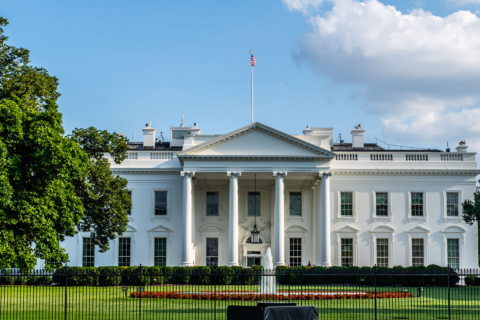The FBI has released the crime statistics from 2022. These statistics are based only on law enforcement data and not all police agencies submit their data through the National Incident-Based Reporting System (NIBRS). For those that do, the data is often incomplete for a variety of reasons. However, it is still the most complete national set of data available on a yearly basis. For city leaders, it is important to know whether or not their local law enforcement agencies are submitting their data to NIBRS (and in turn whether the statistics encompass their local story). Additionally, it is equally important to have ongoing strategies alongside residents to promote accurate and thoughtful information sharing on crime and safety.
What the National Data Shows
FBI crime statistics estimates for 2022 show that national violent crime decreased an estimated 1.7% in 2022 compared with 2021 estimates:
- Murder and non-negligent manslaughter recorded a 2022 estimated nationwide decrease of 6.1% compared with the previous year
- Aggravated assault in 2022 decreased by an estimated 1.1% in 2022
- Robbery showed an estimated increase of 1.3% nationally
Overall, violent crime is down after pandemic-related spikes while crimes like car and property theft are seeing increases (though still below record highs). There are also signs that hate crimes are on the rise, although it is hard to determine whether this is true based on variations in how jurisdictions define and report these crimes.
The media does not often report reductions in crime and cities face many challenges as it relates to communicating data and statistics. However, the release of the FBI report presents an opportunity to consider ongoing communication challenges and possible strategies to overcome them.
The Challenge
For those leading cities, the FBI report can serve as a reflection point, but it is not the only factor in discussing crime and safety locally. Even as data shows that violent crime is decreasing, if some residents still feel unsafe, reports showing trends downward do little to make an impact. Additionally, political rhetoric and media reporting can deeply influence how people feel about crime or safety.
While promising policies or practices around safety in cities show success – without the proper messaging or communication to residents – they can be deemed ineffective despite data proving otherwise. Proven local practices like bail reform, alternative response, community violence interventions, and others, can often be quickly blamed for both incidents of crime and crime rates without any factual basis, simply due to misinformation or inflated reporting. For city leaders, getting ahead of the media, implementing ‘on-the-ground’ strategies for sharing information and making real connections with residents and community-based organizations can help to temper rhetoric and engage residents authentically.
City Strategies
While the release of national data is a good time for cities to reflect on the year past, ongoing and consistent conversations with residents are necessary, particularly around crime and safety. Key strategies to do this include:
- The use of social media.
- Social media often drives perceptions of crime. Through the intentional use of platforms like Facebook, Instagram and TikTok, city leaders and stakeholders can share about local programs, policies and initiatives that are working to address crime and violence and promote community safety.
- Philly Alive 215 is an example of local leaders utilizing social media to share and promote community safety efforts.
- Social media often drives perceptions of crime. Through the intentional use of platforms like Facebook, Instagram and TikTok, city leaders and stakeholders can share about local programs, policies and initiatives that are working to address crime and violence and promote community safety.
- Community conversations
- City leaders cannot simply connect with residents virtually or from their offices. Attending, leading and supporting community conversations is an important aspect of sharing information on crime and safety. Additionally, ensuring that those conversations intentionally include (and when possible, are led by) those most impacted by crime and violence is imperative.
- In Pittsburgh, the police chief held conversations with the community alongside trusted local partners to discuss their local strategy in the summer of 2023.
- City leaders cannot simply connect with residents virtually or from their offices. Attending, leading and supporting community conversations is an important aspect of sharing information on crime and safety. Additionally, ensuring that those conversations intentionally include (and when possible, are led by) those most impacted by crime and violence is imperative.
- Tapping into Credible Messengers
- Credible Messengers are trusted members of the community who have the ability to authentically connect with residents in their neighborhoods-particularly in areas where distrust of the police and the government is commonplace. Their ability to bring credibility to city strategies and relay important information to harder-to-reach/historically excluded populations is an important aspect of any local strategy.
- In 2021, NLC held a listening session focused on credible messengers and their value in cities like Newark, NJ and Washington, DC.
- Credible Messengers are trusted members of the community who have the ability to authentically connect with residents in their neighborhoods-particularly in areas where distrust of the police and the government is commonplace. Their ability to bring credibility to city strategies and relay important information to harder-to-reach/historically excluded populations is an important aspect of any local strategy.
- Consistent messaging across leaders/departments
- Whether it is the Mayor, City Manager, Police Chief, District Attorney, Fire Chief, City Department Director, or other local leader, everyone must be saying the same thing about local safety plans and initiatives. By creating uniform messaging about crime, and violence and the programs/systems in place to promote safety, local leaders can carry the same message across the city through various departments and avenues.
- In Baltimore, MD- the Mayor, the Chief of Police, the Office of Neighborhood and Safety and Engagement, and others – address conversations with the community and media with the same message- a comprehensive and united approach to safety in the city. Additionally- when an unfortunate event occurs (shooting or otherwise) they collectively respond with a trauma-informed approach.
- Whether it is the Mayor, City Manager, Police Chief, District Attorney, Fire Chief, City Department Director, or other local leader, everyone must be saying the same thing about local safety plans and initiatives. By creating uniform messaging about crime, and violence and the programs/systems in place to promote safety, local leaders can carry the same message across the city through various departments and avenues.
Connect
To connect with other local leaders working to find strategies to effectively communicate data, strategies and polices around crime and safety, contact NLC’s Justice Initiatives team at justiceinitiatives@nlc.org.








